
Piston connecting rod: purpose, design, main malfunctions
Content
The piston rod is an element of the crank mechanism, due to which energy is transferred to the crankshaft when the air-fuel mixture is ignited. It is a key detail, without which it is impossible to convert reciprocating movements into circular ones.
Consider how this part is arranged, what kind of malfunctions are, as well as repair options.
Connecting rod construction
The connecting rod works on the principle of pedals in a bicycle, only the piston moving in the cylinder plays the role of the legs in the engine. Depending on the modification of the motor, the crank mechanism has as many connecting rods as there are cylinders in the engine.
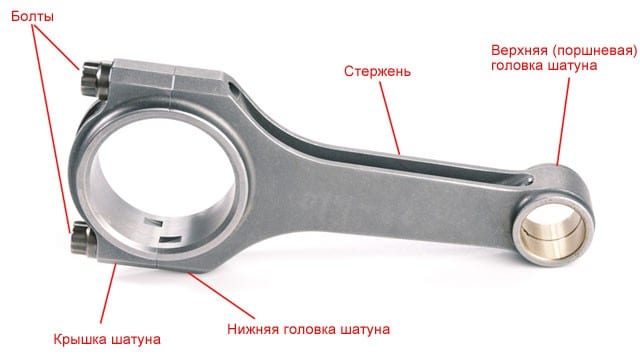
This part has three key elements:
- piston head;
- crank head;
- power rod.
Piston head
This connecting rod element is an integral part, on which the piston is fixed (a finger is inserted into the eyes). There are options with a floating and fixed finger.
The movable finger is mounted in a sleeve made of bronze. It is needed so that the part does not wear out so quickly. Although often there are options without bushings. In this case, there is a small gap between the finger and the head, due to which the contact surface is better lubricated.
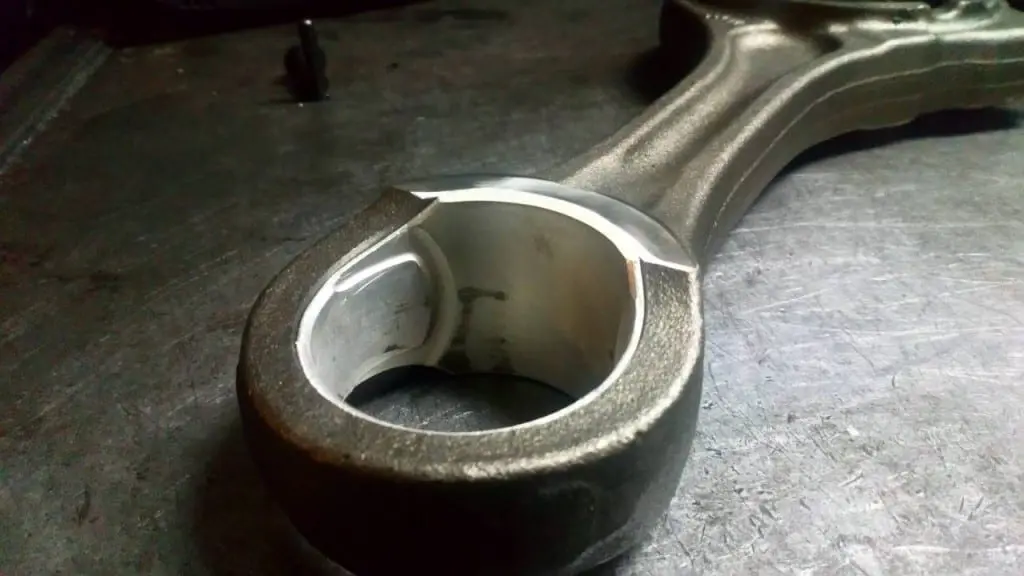
Modification with a fixed finger requires greater accuracy in manufacturing. In this case, the opening of the head will be smaller in diameter than that of the finger.
The trapezoidal shape of the head increases the area on which the piston rests. Since large loads act on this element, it is made with a form that is able to withstand them for a long period.
Crank head
On the other side of the connecting rod there is a crank head, the purpose of which is to connect the piston and connecting rod to the crankshaft crankshaft. Most often, this part is collapsible - the cover is attached to the connecting rod using a bolted connection. In order for this element to wear out less due to constant friction, inserts are inserted between the walls of the head and the crank. Over time, they wear out, but there is no need to replace the entire connecting rod.
The crank head is made with the utmost precision so that during the operation of the mechanism the bolts do not loosen and the motor does not need complex and expensive maintenance.
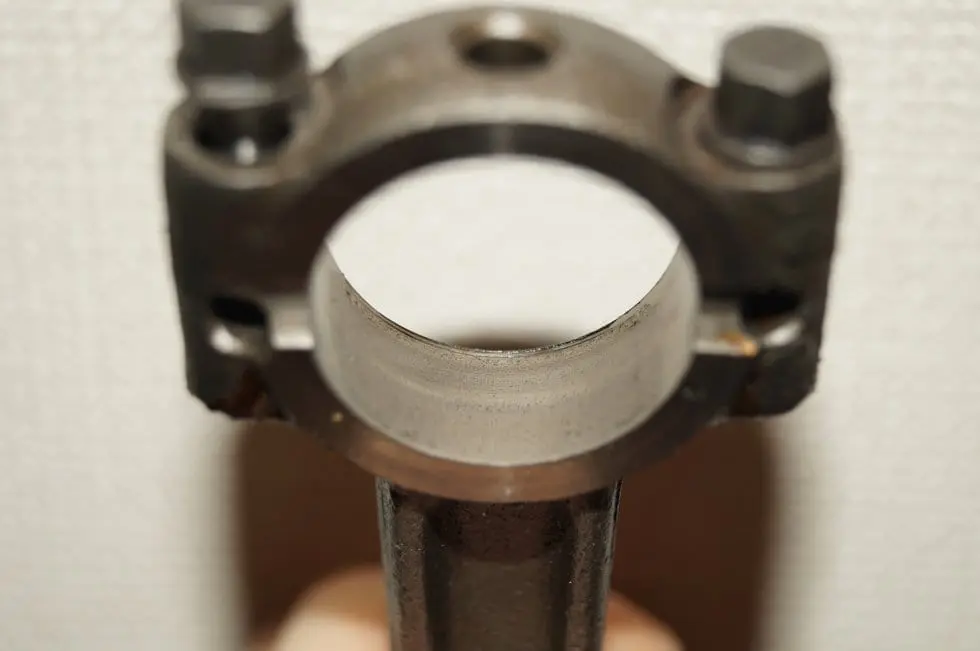
If the head cover worn out, then the wisest solution would be to replace it with an identical one, which is made specifically for this type of engine, instead of looking for a cheaper analogue. During manufacture, both mechanical and thermal loads are taken into account, so engineers select the appropriate material and determine the exact weight of the part.
There are two modifications to the connecting rods:
- stud connection at right angles (used in engines with in-line cylinders);
- connection at a sharper angle to the central axis of the part (used in motors made in the form of V).
The crank head also has a plain bearing (resembles a crankshaft main bearing). It is made of high strength steel. The material is resistant to high loads and has anti-friction properties.
This element also needs constant lubrication. That is why, before starting the movement after the car is idle, you need to let the engine work a little at idle. In this case, the oil will go to all nodes before they will be loaded.
Power rod
This is the main part of the connecting rod, which has an I-beam construction (in a section resembles the letter H). Due to the presence of stiffeners, this part is able to withstand heavy loads. The upper and lower parts (heads) are expanded.
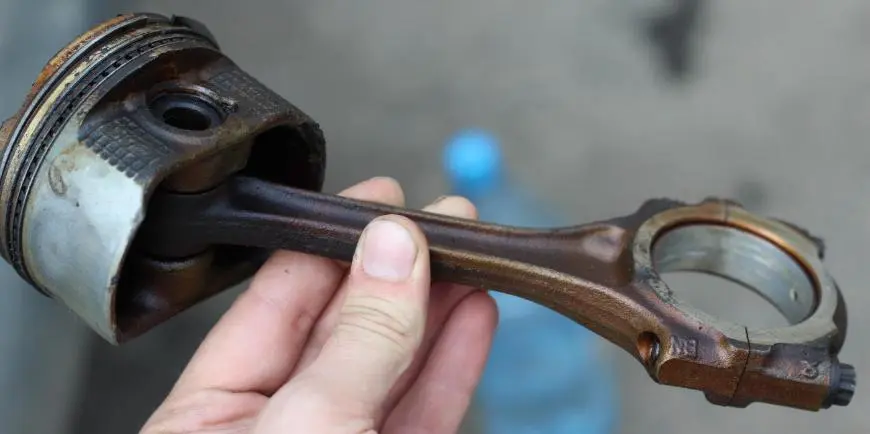
It is worth remembering a few facts that relate to power rods:
- their weight throughout the motor should be the same, so when replacing it should be borne in mind that even slight deviations can destabilize the operation of the engine;
- in gasoline versions, less durable connecting rods are used, since pressure is created in the cylinder to ignite diesel fuel, which is several times higher than compression in a conventional engine;
- if a heavier (or vice versa, lighter) connecting rod is purchased, before installing it, all parts are adjusted in weight on accurate scales.
Materials for the production of connecting rods
In an effort to make engine parts lighter, some manufacturers use easily alloyed materials to make connecting rods. But the load on these elements is not reduced. For this reason, aluminum is rarely used. In most cases, the main metal used to create the connecting rods is cast iron.
This metal is highly resistant to mechanical and thermal loads. And the casting method has already been developed, which facilitates the manufacturing process of parts. Such connecting rods are used in gasoline engines.
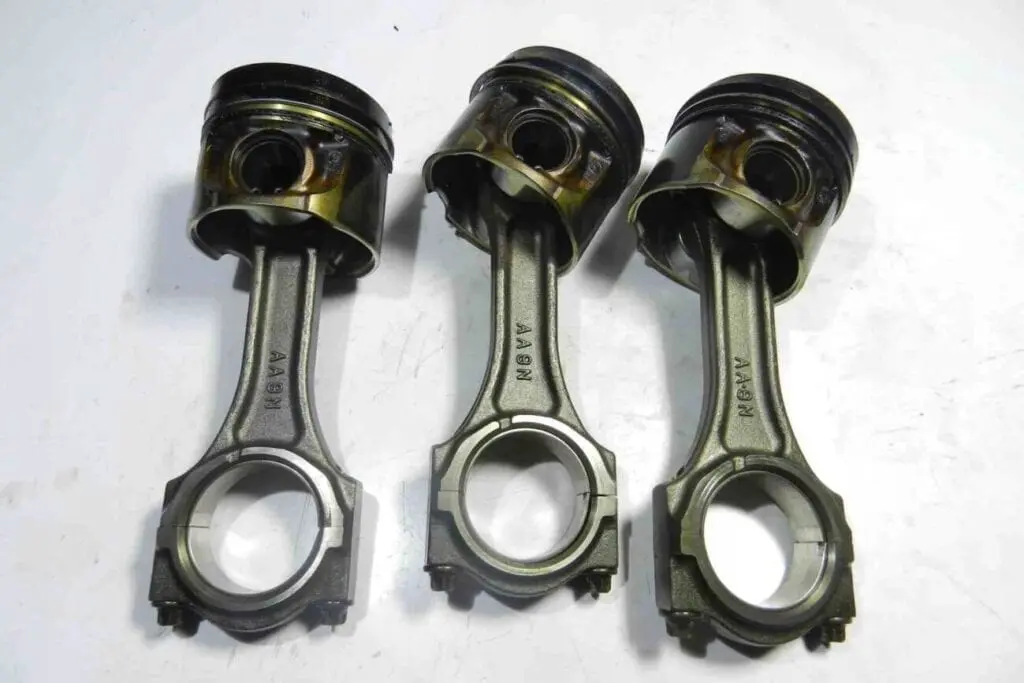
For diesels, as already noted, you need a particularly durable material. For this reason, high alloy steel is used. The processing method is hot forging. Since more sophisticated technologies and materials are used for production more expensive than cast iron, parts are much more expensive than cast iron counterparts.
In sports models, light alloys (titanium and aluminum) are used, which makes the design of the power unit easier (in some cases up to 50 percent).
Fixing bolts are always made of high alloy steel, as in addition to thermal stresses, their threads are constantly subjected to sharp tensile movements.
Why do cranks fail?
The most important cause of a connecting rod breakdown is the natural wear of its components. The upper (piston) head breaks less often. More often it fulfills the same resource as the entire motor. Here are a few more reasons for connecting rod failure:
- deformation as a result of the collision of the piston with the cylinder head;
- scoring due to abrasive contact with the liner surface (for example, the oil filter has broken and the used oil is not cleaned of foreign particles);
- Due to oil starvation, the sliding bearing may be damaged (this can be determined during the overhaul).
After a natural cause, in the second meta there is insufficient or poor-quality lubrication. For this reason, every motorist must remember that regular oil changes must occur at the time set by the manufacturer, even if the car does not drive so often. Oil over time loses its properties, which can adversely affect the health of the engine.
Repair of connecting rods
Not in all cases repair of rods is possible. This operation can be performed if:
- deformation of the support rod;
- increased clearance of the piston head;
- increase the clearance of the crank head.
Before repair, a visual inspection of the part is carried out. Using a nutrometer, the diameter and all the clearances of the connecting rod are measured. If these indicators are within normal limits, but there is no need to change the connecting rods.
If the rod is deformed, this cannot be ignored, since uneven load distribution will lead to destruction of the cylinder surface, increased wear of the crankshaft and the piston itself.
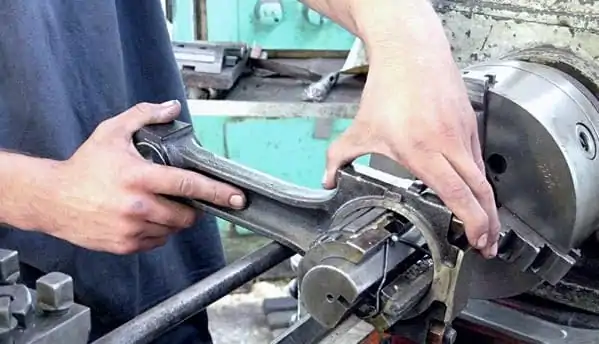
The deformation of the connecting rod is always accompanied by increased engine noise even at low revs. It is extremely difficult to fix such a defect, so in this case the part is simply replaced with a new one.
In the case of inappropriate clearance, the head cover is bored to the appropriate size of the installed fasteners. In order not to remove the extra millimeter, you need to use a special lathe with a nozzle for boring.
If development has occurred in the piston head, special repair liners should be used, the sizes of which correspond to the required clearance. Of course, while the motor is running, the sleeve will be rubbed and take the desired shape.
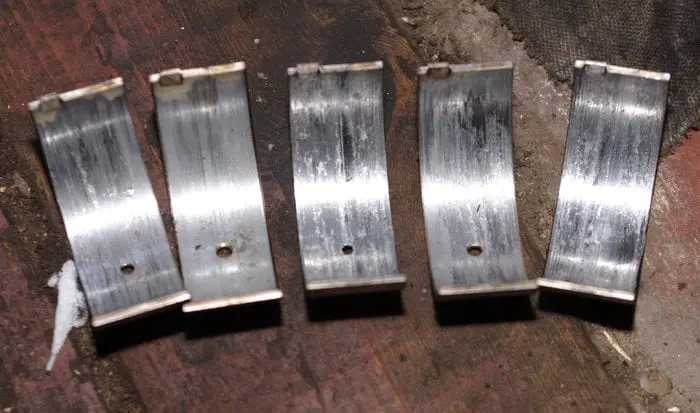
When using the bushings, you should check whether the bore of the liner and the head coincided - oil flows through the finger through it. Otherwise, the repair will not extend the life of the motor, but rather sharply reduce its life (after all, the motorist thinks that the motor is “uncapitalized”, and that it does not need immediate repair, but in fact the parts are experiencing oil starvation).
After editing, the parts must be weighed so that unpleasant vibrations do not appear in the motor due to the difference in weight.
Questions and answers:
How to check the connecting rod for an ellipse? The connecting rod geometry is checked using special equipment. If the connecting rod is slightly deformed, this cannot be determined by eye. For this, an internal gauge or a specialized machine is used.
What is the connecting rod made of? From rod, upper piston head, lower crank head. The piston head is connected to the piston with a pin, and the crank head is connected to the crank neck.
One comment
Fabrics
Thank you very much for this very well-constructed article. You helped me a lot for my oral in etlv! I have to present a connecting rod and I didn't know how to go about it… Thank you ^^